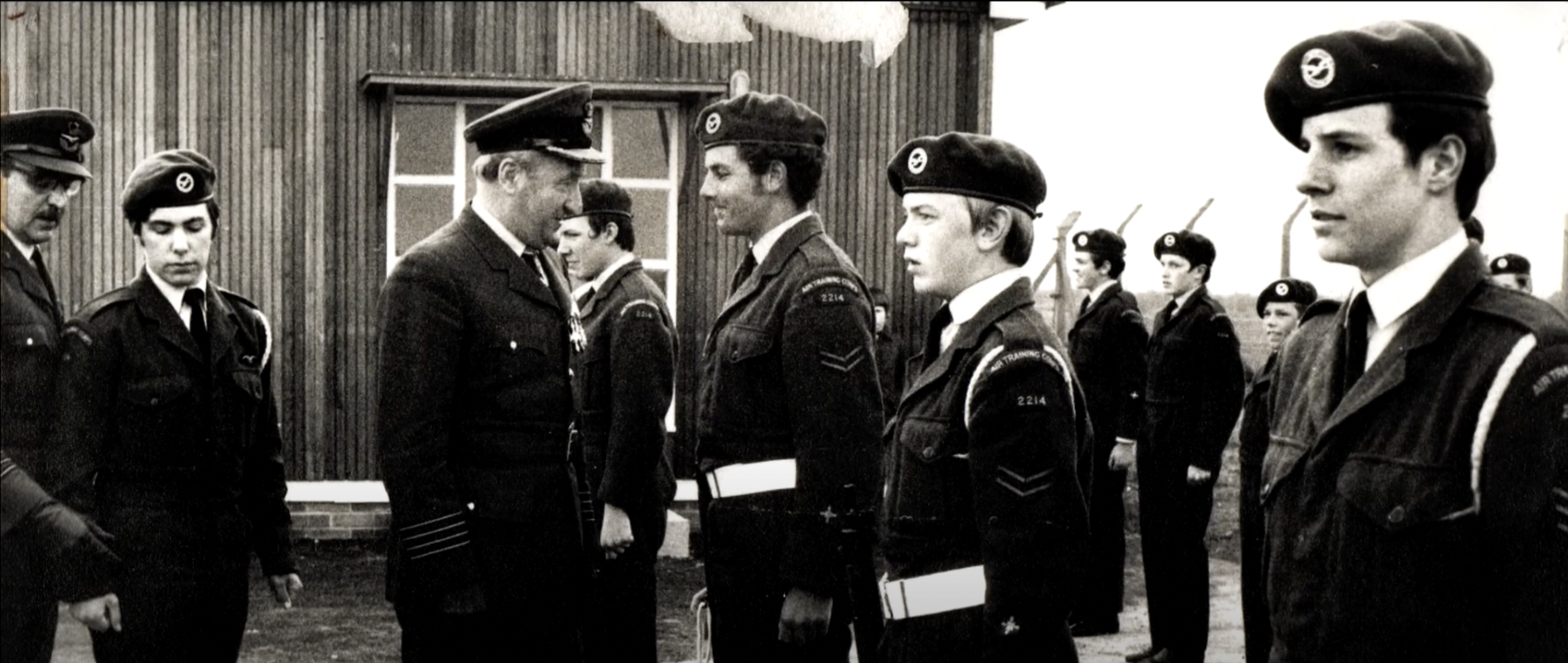
Squadron History
2214 (Usworth) Squadron is a unit with a rich history…
2214 (Usworth) Squadron ATC was formed in 1941 on the site of RAF Usworth, a former Royal Air Force Station in Washington, in the North East of England.
In 2016, our cadets made a video celebrating 75 years of 2214 Squadron and the Air Training Corps:
Did you know we’re the only Air Training Corps squadron to have it’s own published book?
2214 Usworth Squadron: An Illustrated History is available to purchase either on squadron or through Amazon.
Commanding Officers
-
19?? Flt Lt A Cole RAFVR(T)
1954 Flt Lt B Storr RAFVR(T)
1956 Flt Lt A Ibbitson RAFVR(T)
1962 Flt Lt J Taylor RAFVR(T)
1969 Flt Lt R Jones DSO DFC RAFVR(T)
1977 Flt Lt S Close RAFVR(T)
1981 Flt Lt D Crozier RAFVR(T)
1993 Flt Lt B Adgar RAFVR(T)
2018 Flt Lt D.C. Handalage RAFVR(T)
2020 Flt Lt P.N. Yarrow RAFAC
2023 Flt Lt K Siberry RAFAC
The Squadron Crest
2214’s crest has recently undergone some changes, but many elements of our badge remains the same…
The Body
Now adopting a crimson circlet as opposed to the previous cerulean blue, the body of the crest maintains the same imagery; the shield of the Washington family sits central- the Washington family resided at the Old Hall in what is now Washington Village. This shield was used by the family up until George Washington, the first President of the United States.
The crest is guarded by a Vampire FB Mk9 aircraft. This aircraft was flown by 607 (County Durham) Squadron RAF from RAF Usworth and a refitted aircraft became our gate guardian in 1981.
The Motto
The squadron motto “Virtutem Probamus” is a latin phrase, instilling both self-belief and a willingness in our cadets. Virtutem Probamus translates to “We Prove Our Worth”, this motto has remained with the unit for many years.

Squadron History
“In this grave hour…”
The Second World War was on the horizon and the RAF would need a serious amount of combat-ready pilots and competent support crew to keep them in the air.
That idea came from Air Commodore J A Chamier, now known as the Father of the Air Cadets. With his love for aviation, he wanted to establish an air cadet corps, encouraging young people to consider a career in aviation - pretty exciting at a time when very few people ever got the chance to fly. His experience in World War I convinced him that the sooner training began the better prepared and experienced a person would be in combat.
In 1938, he founded the Air Defence Cadet Corps (ADCC).

Squadron History
A New Beginning
There was high demand for places in the ADCC and squadrons were set up in as many towns around the UK as possible. Local people ran them and prepared cadets for joining the RAF. They also helped form the diverse and expanding programme of activities that our cadets enjoy today.
With many instructors being drafted into the RAF and squadron buildings being used by the military, cadets were sent to work on RAF stations. They carried messages, handled aircraft and moved equipment. They filled thousands of sandbags and loaded miles of belts of ammunition. They were invaluable.
By the end of the war, almost 100,000 cadets had joined the RAF.
Towards the end of 1940, the government realised the value of the cadet force and took control of the ADCC. It reorganised and renamed it, and on 5 February 1941 the Air Training Corps was officially established with King George VI as the Air Commodore-in-Chief.
This saw the formation of 2214 (Castletown & District) Squadron ATC.

Squadron History
“Through Adversity…”
As the role of RAF Usworth ebbed and flowed, the airfield was left temporarily dormant after the war.
2214 Squadron ATC adapted to each new incarnation, opening again in 1946; bringing in navigation trainers and seeing the introduction of Chipmunk training aircraft to bring cadet training to a whole new level.
In 1958 RAF Usworth was officially closed. Two former medical huts remained to the north of the inactive airfield, illuminated only every Tuesday and Thursday evening- 2214 Squadron continued to operate on the RAF Usworth site, adhering to the motto of their parent service.
"Per Ardua ad Astra".

Squadron History
The Dawn of a New Era
As the Rock ‘n’ Roll era departed and the 1960’s came in, 2214 Squadron saw new developments within the Corps and new adventures including Squadron Camps at RAF Leuchars, RAF Kinloss and RAF Wyton.
But the 1960’s also saw a change to the cadet syllabus, as fears of a nuclear war loomed across the globe. Thankfully, the cadets were able to continue to attend and did not have reason for duck and cover.
However, in 1971, a Royal Air Force Vulcan Bomber endured technical difficulties whilst in the air and crashed in Wingate, County Durham. Luckily, the pilot, co-pilot and all crew members escaped with their lives.
The crash site was approximately 20 miles away from Usworth squadron and cadets from across the region were called into action to help clear the crash site.
1971 also saw 2214 Squadron gain a new headquarters.

Squadron History
Something Old, Something New…
1980 saw two new introductions for Air Cadets in the North East-Girls were allowed to join the ranks of the Air Training Corps, and the region began to host Air Days, an annual event what would become the Sunderland International Airshow.
After the loss of RAF Usworth, 2214 (Usworth) Squadron operated next to Sunderland Airport. These Air Days would spring the old military airfield back to life, welcoming old and new aircraft. The cadets would form an integral part of the day; selling programmes and marshalling.
The Sunderland International Airshow was last held in 2019, but the cadets continue to make their presence known elsewhere, across the City of Sunderland and across the world.




